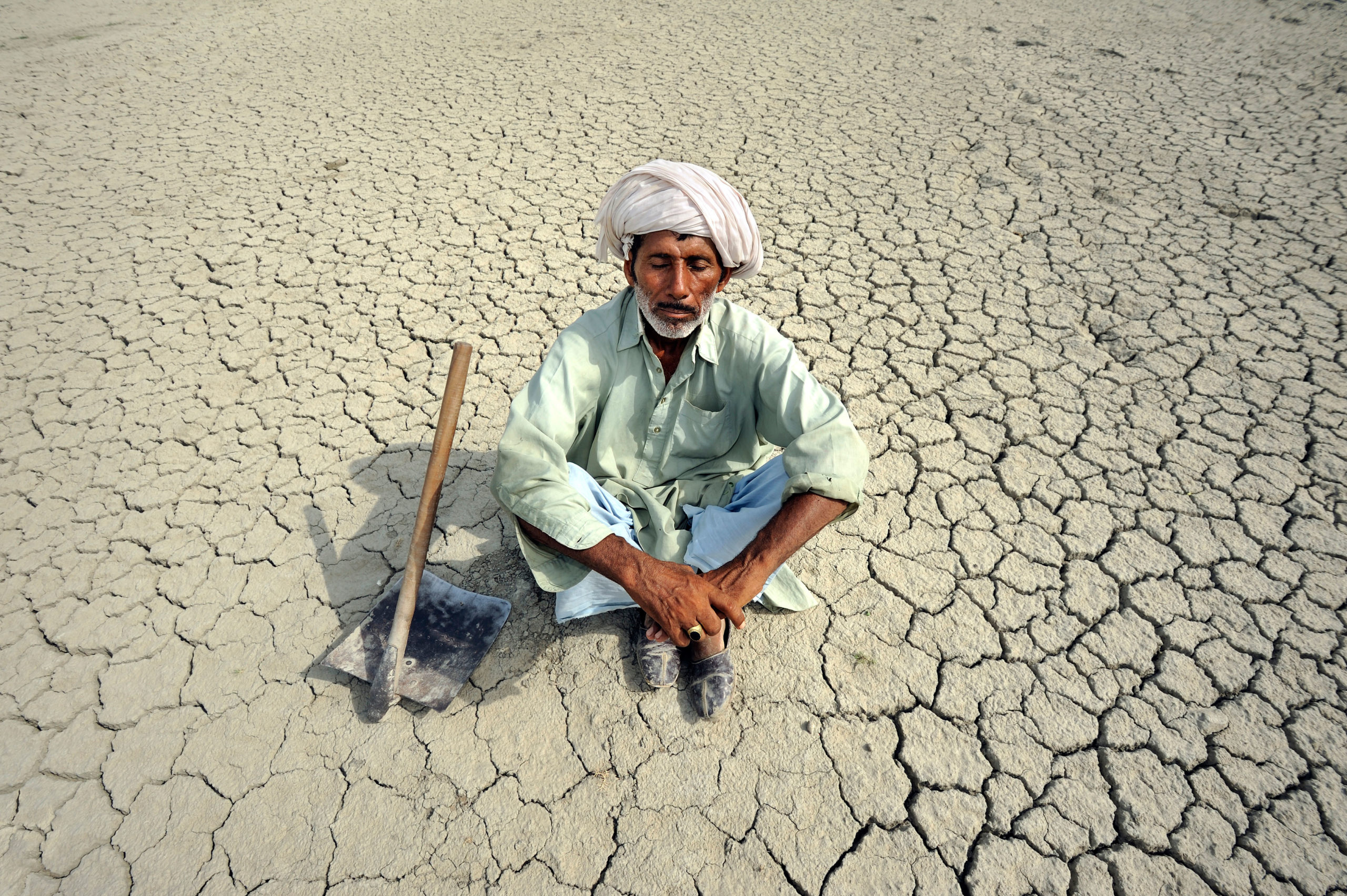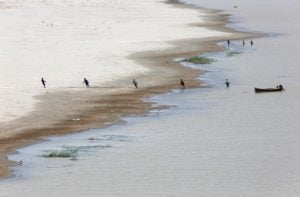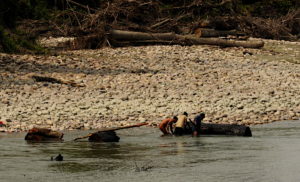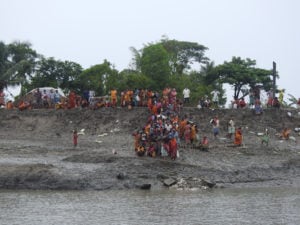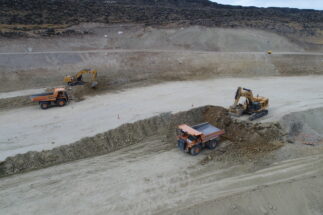Thirty years ago, in its 1990 assessment, the UN’s Intergovernmental Panel on Climate Change (IPCC) warned that large-scale human migration could be the single most significant impact of climate change. The environment forcing people to migrate is not a new development. Throughout human history, people have moved from one region to another to escape floods, forest fires, and drought. However, climate change has raised the possibility of mass migration on a scale the world has never witnessed before.
A growing body of research suggests that many people are already migrating because life has become insupportable. A significant portion of these migrants are also crossing national borders.
The issue of climate-induced migration is particularly important ahead of the UN Climate Change Conference (COP) in Glasgow next month. In recent years, particularly since the 2010 COP in Cancun, climate talks have integrated different components of human migration. The focuses have been on preventing climate-induced migration and how to provide support to those who are forced to migrate. At COP26, the UN International Organization for Migration (IOM) will collaborate with its partners to convince parties to prioritise human migration aspects of climate change.
The forces driving people to leave their homes
Global warming is leading to sea level rise on an unprecedented scale, according to IPCC scientists. Between 2006 and 2016 sea levels globally rose 2.5 times faster than the rate for almost all of the 20th century. At the same time the seas are warmer than they used to be, which can lead to more tropical storms and a higher risk of coastal flooding.
Rising seas take away millions of people’s land, homes and sources of livelihood, and have started to force people to move from many low-lying coastal areas and small island countries. The IPCC warns that sea levels could rise by up to 1.1 metres by 2100. (In the past 100 years they have risen 16-21 centimetres.) A rise of this magnitude will not only inundate large low-lying areas in many countries but also potentially submerge many small island countries. In 1987, Maumoon Abdul Gayoom, who at the time was president of the Maldives, told the UN General Assembly that a sea level rise of only one metre would displace all his countrymen. More than three decades have passed, and the threat of several small island countries disappearing from the global map looks more likely than ever before.
Climate change also disturbs rainfall patterns, leading to intensive flooding, drought and soil erosion in tropical and arid regions. Food production is being affected by extreme weather, unpredictable seasonal changes and wildfires. In 2018, the Fourth National Climate Assessment report of the US Global Change Research Program warned that climate change was disrupting agricultural productivity, causing severe food insecurity and loss of farming jobs.
Finally, the world’s critical freshwater situation is driving people to migrate. More than 40% of the global population is suffering from water scarcity. Climate change is expected to seriously aggravate the problem, particularly in Asia, Africa and the Middle East. As water supply and demand patterns change, existing water-sharing arrangements between countries and regions are likely to be more prone to tension and conflict. In August 2021, a World Bank report stated that climate change is accelerating the global water crisis, and the scarcity of water is contributing to 10% of the increase in global migration.
Majority of climate refugees are in developing countries
Countries’ and societies’ ability to cope with climate change-induced food insecurity and subsequent economic decline depends on their economic and institutional strength. Social norms and practices also play an important role in coping with this crisis. Some countries and societies are better than others at planning and implementing adaptation strategies to cope with the hunger and unemployment brought by climate change. But the adverse impact of climate change is usually more severe in developing countries. It not only makes poor people poorer, but also forces them to migrate in search of survival.
Despite the unanimity of opinion on the potential of climate change to induce large-scale migration, there is a lack of agreement over how many people are migrating and will migrate in the future due to climate change. Many estimates are available about the number of climate migrants, and these forecasts vary from 25 million to 1 billion by 2050. However, the commonly given assessment has been around 200 million. In its Groundswell report released last month, the World Bank calculates that 216 million people across six regions of the world could move within their countries by 2050. The World Bank anticipates this number will significantly increase through the second half of the century.
Why climate migrants are refugees
Being forced to migrate is never easy. The challenges for a migrant become manifold when they need to move between a national border in order to survive. There is no doubt that climate change will continue to force millions of poor people to migrate, many of whom will cross national borders and move to other countries.
Though increasingly climate migrants to other countries are described as “climate refugees”, displacement by disasters and climate change is yet to be included in the definition of a refugee as established under international law. Thus climate refugees continue to lack the legal protection that provides the basis for granting asylum.
There is a need for the definition of “refugee” to be expanded to address the increasing challenge of climate change-forced population displacement
In this context, the case against the government of New Zealand by Ioane Teitiota, a Kiribati national, is quite significant. The Supreme Court of New Zealand recognised the genuineness of Teitiota’s contention, as he was displaced from his homeland due to sea level rise. But it did not grant him refugee status, reasoning that he wouldn’t face persecution if he returned home. After that, he was deported to Kiribati in 2015 with his wife and children.
Teitiota then approached the UN Human Rights Committee (OHCHR), which ruled in his favour on 23 September 2020, saying that countries may not deport individuals who face climate change-induced conditions that violate their right to life. This was the first decision of the UN Human Rights Committee on an asylum case on the grounds of climate change. However, the body has no jurisdiction to rule on refugee status. Though many have described the OHCHR’s decision as a landmark one, Teitiota continues to live in Kiribati.
Neither the UN Refugee Convention nor any multilateral treaty protect people forced to migrate because of changes in their environment. Their rights are only covered under human rights law. There is therefore a need for the definitional fiat of “refugee” to be expanded to address the increasing challenge of climate change-forced population displacement.
The international community needs to take the growing problem of climate-induced migration more seriously – especially as it is inevitable now, given emissions have locked in a certain degree of warming. Only a coordinated effort at the global level can motivate, coordinate and implement an effective approach.
